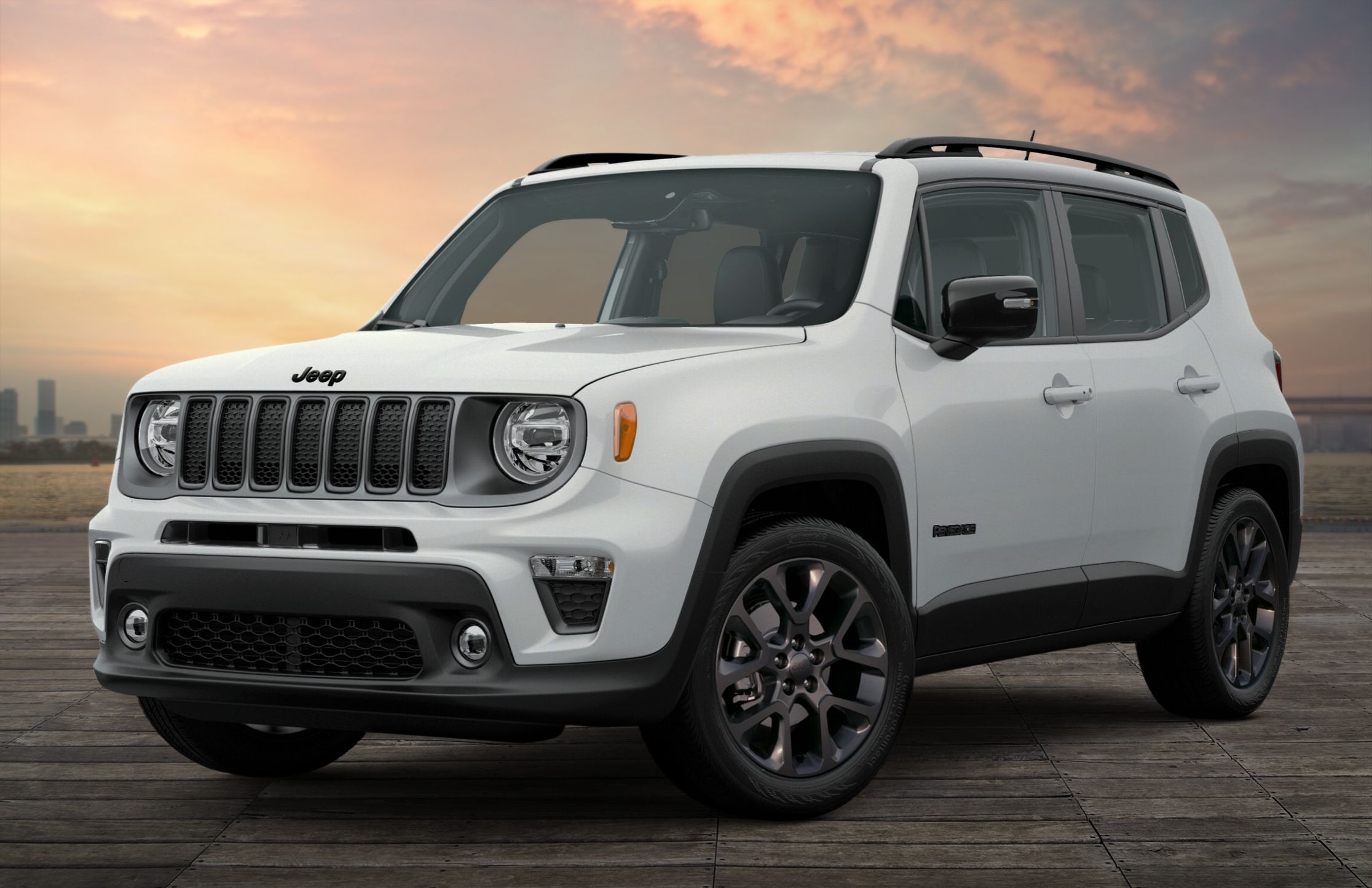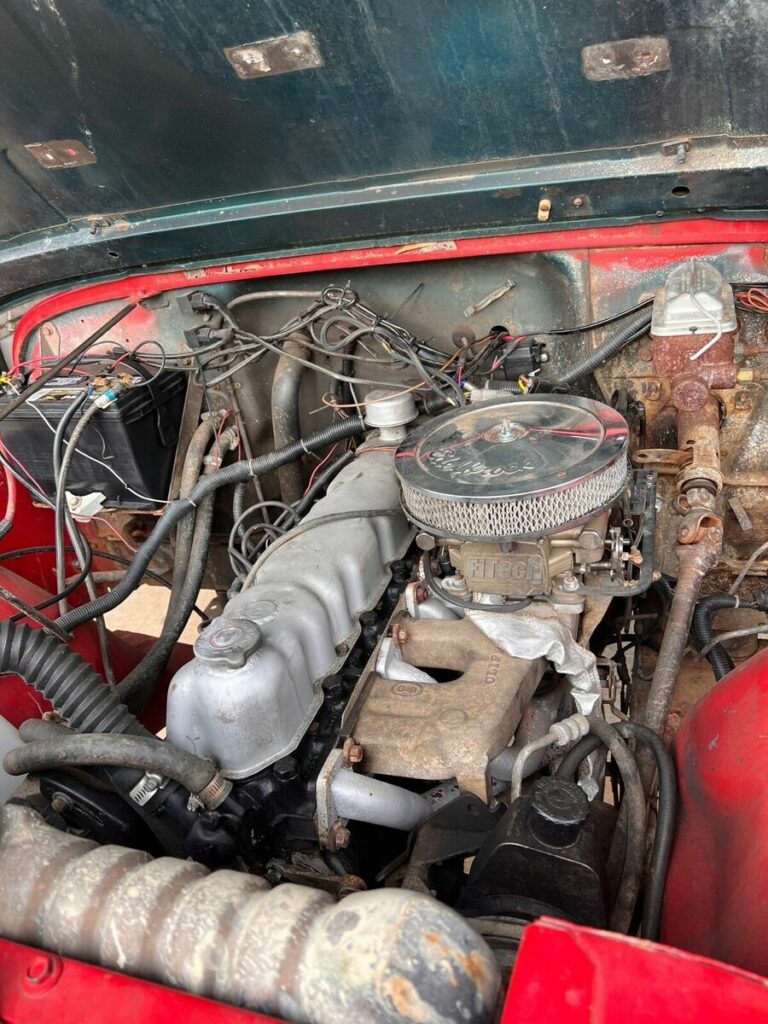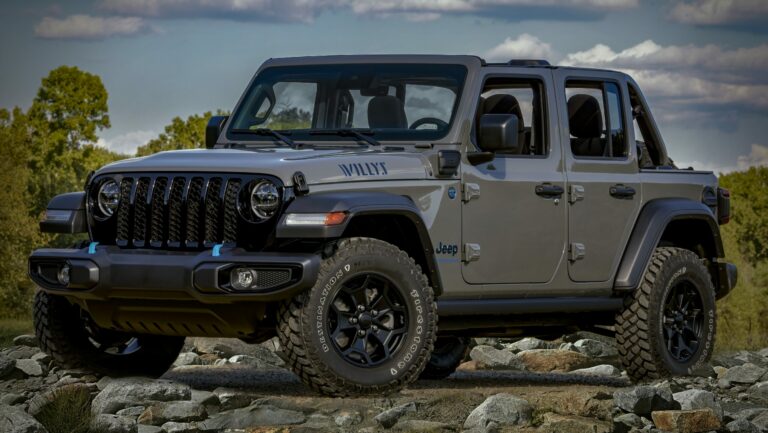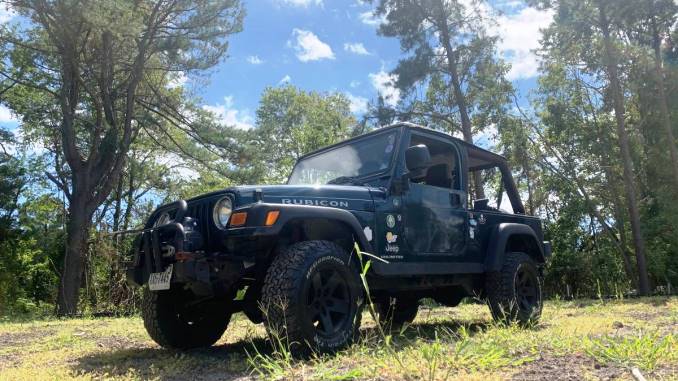Jeep Snorkel For Sale: Your Ultimate Guide to Conquering Water and Dust
Jeep Snorkel For Sale: Your Ultimate Guide to Conquering Water and Dust jeeps.truckstrend.com
The allure of off-roading lies in pushing boundaries, exploring uncharted territories, and tackling challenging terrains. For many Jeep enthusiasts, this often involves navigating through water crossings, dusty trails, and unpredictable environments. While Jeeps are built for adventure, their standard air intake systems are not designed for deep water fording or prolonged exposure to fine dust. This is where a Jeep snorkel for sale becomes an indispensable upgrade, transforming your vehicle’s capabilities and protecting its vital engine components.
A Jeep snorkel, also known as a raised air intake, is an external modification that relocates the engine’s air intake from its vulnerable, low-lying position (typically within the fender or under the hood) to a much higher point, usually near the roofline of the vehicle. This simple yet effective modification ensures that your engine draws in clean, dry air even when submerged in water or engulfed in a cloud of dust, preventing catastrophic engine damage like hydrolock and significantly extending the life of your air filter. If you’re serious about taking your Jeep where others fear to tread, understanding the world of Jeep snorkels is your first step.
Jeep Snorkel For Sale: Your Ultimate Guide to Conquering Water and Dust
What Exactly is a Jeep Snorkel and How Does It Work?
At its core, a Jeep snorkel is a specialized air intake system designed to protect your engine in extreme conditions. It consists of several key components:
- Air Ram/Snorkel Head: This is the top-most part, often a forward-facing scoop or a cyclonic pre-filter, positioned high above the hood. Its primary function is to capture clean air.
- Intake Piping: A series of robust, airtight pipes that run from the snorkel head down the exterior of the A-pillar or fender, then through the bodywork, to connect with the vehicle’s existing airbox.
- Connection to Airbox: A sealed connection point that integrates the snorkel system with your Jeep’s factory air filter housing.
- Mounting Hardware: Brackets and fasteners used to securely attach the snorkel to the vehicle’s body.

The principle is straightforward: instead of the engine drawing air from a low point where it’s susceptible to water ingestion or heavy dust concentration, the snorkel directs the air intake to a much higher, safer location. This ensures a continuous supply of clean, dry air to the combustion chambers, even when the hood is submerged, safeguarding against the devastating effects of water entering the engine – a phenomenon known as "hydrolock," which can bend connecting rods, damage pistons, and lead to total engine failure.
Why Invest in a Jeep Snorkel? The Unbeatable Benefits
The decision to purchase a Jeep snorkel for sale isn’t just about aesthetics; it’s about practical protection and enhanced off-road capability.
- Ultimate Water Fording Capability: This is the primary and most critical benefit. With a snorkel, you can confidently navigate water crossings that would otherwise be impassable and incredibly risky for a stock Jeep. It significantly raises your vehicle’s wading depth limit, allowing you to tackle deeper rivers, flooded trails, and creek beds without fear of hydrolocking your engine.
- Superior Dust Filtration: Beyond water, snorkels excel in dusty environments. By drawing air from higher up, away from the ground where dust is most concentrated, they provide a much cleaner air supply to your engine. This reduces the load on your air filter, extends its lifespan, and minimizes abrasive wear on internal engine components caused by fine particulate matter.
- Improved Air Quality and Potential Performance: In some scenarios, a snorkel can draw in cooler, denser air from above the hot engine bay. Cooler air contains more oxygen, which can theoretically lead to improved combustion efficiency and marginal performance gains. While not a primary performance mod, it’s a welcome side effect.
- Enhanced Engine Longevity: By preventing water ingestion and reducing dust intake, a snorkel directly contributes to the long-term health and reliability of your Jeep’s engine, saving you from potentially expensive repairs down the line.
- Rugged Aesthetics and Off-Road Cred: Let’s be honest, a well-installed snorkel gives your Jeep an undeniable, purposeful, and rugged look. It signals that your vehicle is ready for serious adventure and adds to its visual appeal as an extreme off-road machine.
Types of Jeep Snorkels Available
When looking for a Jeep snorkel for sale, you’ll encounter a few common designs and materials:
- Safari/Ram Head Snorkels: These are the most common and recognizable type, featuring a large, forward-facing scoop at the top. They are highly effective at collecting air and are designed to prevent rain and splashes from entering the intake.
- Cyclonic/Pre-Cleaner Snorkels: Ideal for extremely dusty or sandy environments, these snorkel heads incorporate a centrifugal pre-filter that spins out larger dust and dirt particles before the air even reaches your main air filter. This is especially beneficial for desert expeditions.
- Low-Profile/Hidden Snorkels: While less common for Jeeps due to their often visible and rugged aesthetic, some designs attempt to integrate the snorkel more discreetly into the fender or cowl, offering a cleaner look at the expense of potential ultimate wading depth.
- Materials:
- LLDPE (Linear Low-Density Polyethylene): The most popular material due to its extreme durability, UV resistance, impact strength, and relatively low cost. It’s designed to withstand harsh off-road conditions without cracking or fading.
- Metal: Less common, but some custom or heavy-duty applications might use steel or aluminum. While strong, they can be heavier, prone to rust (if not properly coated), and transmit more vibration.
Key Considerations When Buying a Jeep Snorkel
Before you commit to a "Jeep snorkel for sale," keep these crucial factors in mind:
- Vehicle Specificity: Snorkels are not universal. You must purchase a snorkel designed specifically for your Jeep model (e.g., JK, JL, TJ, XJ, YJ) and year, and often for your engine type (e.g., 3.6L Pentastar, 2.0L Turbo, 3.8L, 4.0L). Compatibility is paramount for proper fitment and sealing.
- Material Quality and Durability: Opt for high-quality LLDPE from reputable manufacturers. Look for thick walls, smooth finishes, and robust mounting points that can withstand impacts from branches or debris.
- Installation Complexity: Be aware that installing a snorkel typically involves drilling holes in your Jeep’s fender and sometimes the A-pillar. While many kits come with templates, it’s a permanent modification. Assess your comfort level with DIY installation or budget for professional help.
- Sealing Capability: The effectiveness of a snorkel hinges on its ability to create an airtight seal from the snorkel head all the way to the engine’s airbox. Poor seals will negate the benefits and allow water/dust to enter. Check reviews for seal quality.
- Brand Reputation: Stick with well-known brands in the off-road community (e.g., ARB, Smittybilt, Rugged Ridge, AEV) that have a proven track record for quality and fitment.
- Aesthetics: While functional, the look of a snorkel is subjective. Ensure you like the design and how it integrates with your Jeep’s overall appearance.
- Local Regulations: While rare, some regions might have specific regulations regarding vehicle modifications. It’s always wise to do a quick check.
General Installation Insights
While a full step-by-step guide is beyond this article’s scope, here’s what to expect for a typical Jeep snorkel installation:
- Preparation: Gather all tools, read instructions thoroughly, and protect your Jeep’s paintwork around the work area.
- Template Application: Most kits include a paper template that you’ll tape to your fender to mark drilling points precisely. This is the most critical step. Measure twice, cut once!
- Drilling: Carefully drill pilot holes, then use a hole saw for the larger openings in the fender and possibly the A-pillar (for mounting brackets).
- Fender Trimming: Some models may require minor trimming of the inner fender liner for the snorkel piping to pass through.
- Connecting to Airbox: The snorkel piping will connect to your existing airbox, often requiring removal of the factory intake ducting. Ensure all connections are tight and sealed with appropriate sealants (silicone, RTV).
- Mounting: Secure the snorkel to the A-pillar and fender using the supplied brackets and hardware.
- Final Checks: Double-check all connections for airtightness. Start the engine and listen for any unusual air intake noises.
If you’re not confident with drilling into your vehicle, professional installation by an experienced off-road shop is highly recommended.
Maintaining Your Snorkel for Optimal Performance
Maintaining a snorkel is relatively simple but crucial for its effectiveness:
- Regular Inspection: Periodically check all visible components – the snorkel head, piping, and mounting brackets – for cracks, damage, or loose connections.
- Seal Integrity: Inspect the seals where the snorkel connects to the airbox and where it passes through the bodywork. Reapply sealant if you notice any cracking or degradation.
- Clean the Snorkel Head: If you have a cyclonic pre-filter, empty it regularly. For ram heads, ensure the opening isn’t obstructed by leaves, mud, or debris.
- Air Filter Check: Even with a snorkel, it’s wise to check your main air filter more frequently, especially after very dusty or muddy outings.
Potential Challenges and Solutions
- Drilling Anxiety: This is the biggest hurdle for many. Solution: Use the template meticulously, take your time, or pay a professional.
- Poor Sealing/Leaks: Solution: Use high-quality automotive-grade sealant (e.g., RTV silicone) on all mating surfaces and connections. Test thoroughly.
- Aesthetics: Some dislike the look. Solution: Embrace the ruggedness, or consider the few low-profile options if available for your model.
- Noise: Very minimal, but some users report a slight change in intake sound. Solution: Usually, it’s not an issue, but ensure all connections are tight to prevent whistling.
- Warranty Concerns: Generally, installing a snorkel will not void your entire vehicle warranty. However, if an engine issue is directly caused by a faulty snorkel installation or product failure, the repair might not be covered. It’s always best to discuss with your dealer if you have concerns.
Where to Find Jeep Snorkels For Sale
You have several excellent avenues to find the perfect Jeep snorkel for sale:
- Specialty Off-Road Retailers: Online stores like Quadratec, ExtremeTerrain, 4 Wheel Parts, and Northridge4x4 specialize in Jeep accessories and offer a wide selection from top brands. They often have detailed product descriptions, customer reviews, and fitment guides.
- Manufacturer Websites: Brands like ARB, Smittybilt, Rugged Ridge, and AEV sell directly from their websites or through authorized dealers.
- E-commerce Giants: Amazon and eBay can be good sources, but be cautious. Ensure you’re buying from a reputable seller and verify product authenticity, especially with cheaper, no-name brands.
- Local Off-Road Shops: Supporting local businesses can be beneficial, as they often offer installation services and expert advice tailored to your region’s off-roading conditions.
- Used Marketplaces: Websites like Craigslist, Facebook Marketplace, or dedicated Jeep forums might have used snorkels for sale. Exercise caution, inspect thoroughly for damage, and verify compatibility.
Price Table: Jeep Snorkel For Sale (Estimated Ranges)
Please note: Prices are highly variable based on brand, material, specific Jeep model, and retailer. These are estimated ranges for general guidance.
| Snorkel Type/Category | Common Jeep Models | Material | Estimated Price Range (USD) | Key Features & Notes |
|---|---|---|---|---|
| Budget/Entry-Level | JK, TJ, XJ, YJ | LLDPE | $150 – $300 | Basic ram head design. May require more user fabrication or sealing effort. Good for occasional water crossings. Brands often include "no-name" or smaller manufacturers. |
| Mid-Range/Standard | JK, JL, JT, TJ, XJ | LLDPE | $300 – $550 | High-quality LLDPE, good fitment, complete kits with templates. Popular Safari-style ram heads. Excellent balance of cost and performance for most off-roaders. Brands: Smittybilt, Rugged Ridge, some lower-end ARB. |
| Premium/High-End | JK, JL, JT, Custom | LLDPE, sometimes Hybrid | $550 – $800+ | Top-tier brands (ARB Safari Snorkel, AEV Snorkel). Engineered for precise fit, optimal airflow, and maximum durability. May offer advanced features like cyclonic pre-filters or seamless integration with other aftermarket parts. Often includes comprehensive instructions and support. |
| Cyclonic Pre-Filter Head (Add-on) | Universal (fits many snorkels) | Plastic/Metal | $80 – $200 | Replaces standard ram head. Ideal for extremely dusty or sandy conditions, separating larger particles before the air enters the main filter. |
Note: Installation costs (if professionally done) are additional and can range from $200 – $500 depending on shop rates and complexity.
Frequently Asked Questions (FAQ) About Jeep Snorkels
Q1: Do I need to tune my engine after installing a snorkel?
A1: Generally, no. A snorkel simply relocates the air intake point. As long as it’s properly sealed and doesn’t restrict airflow, your engine’s ECU will compensate. Significant tuning is rarely required unless you’re making other major engine modifications.
Q2: Will a snorkel affect my Jeep’s fuel economy?
A2: Any effect on fuel economy is usually negligible. Some argue it might slightly improve efficiency by drawing cooler, denser air, but this is often minimal. The added drag is also very minor.
Q3: Can I install a snorkel myself, or do I need a professional?
A3: Many DIY enthusiasts successfully install snorkels. However, it involves permanent modifications like drilling into your Jeep’s body. If you’re not comfortable with power tools or precise measurements, professional installation is highly recommended to ensure proper sealing and avoid costly mistakes.
Q4: How deep can I go with a snorkel?
A4: A snorkel addresses only the engine’s air intake. Your wading depth is still limited by other factors: the height of your differential breathers, electrical components (like the alternator, ECU, fuse box), and the overall sealing of your cabin. A snorkel allows you to go deeper than stock, but it doesn’t make your Jeep a submarine. Always understand your vehicle’s limits.
Q5: Will installing a snorkel void my Jeep’s warranty?
A5: Under the Magnuson-Moss Warranty Act, a manufacturer cannot void your entire warranty simply because you installed an aftermarket part. However, if a component fails and the dealership can prove that the snorkel directly caused the failure (e.g., a poorly installed snorkel led to water entering the engine), that specific repair might not be covered. It’s always best to discuss with your dealer if you have concerns.
Q6: Are all snorkels for sale the same quality?
A6: Absolutely not. There’s a wide range of quality. Cheaper, generic snorkels may have poor fitment, inferior materials, and inadequate sealing, leading to problems. Investing in a reputable brand ensures better durability, precise fitment, and reliable performance.
Conclusion: Elevate Your Off-Road Adventures
A Jeep snorkel for sale is far more than just an aggressive-looking accessory; it’s a vital piece of off-road equipment that provides unparalleled engine protection and significantly expands your vehicle’s capabilities. Whether you’re planning deep water crossings, tackling dusty desert trails, or simply want the peace of mind that your engine is safeguarded, a quality snorkel is a worthy investment.
By understanding the types available, considering key factors like vehicle compatibility and material quality, and ensuring proper installation, you can confidently select the right snorkel for your Jeep. With this essential upgrade, your off-road adventures will no longer be limited by the fear of water or dust, opening up a world of new possibilities and allowing you to truly conquer the wild. Happy Jeeping!




